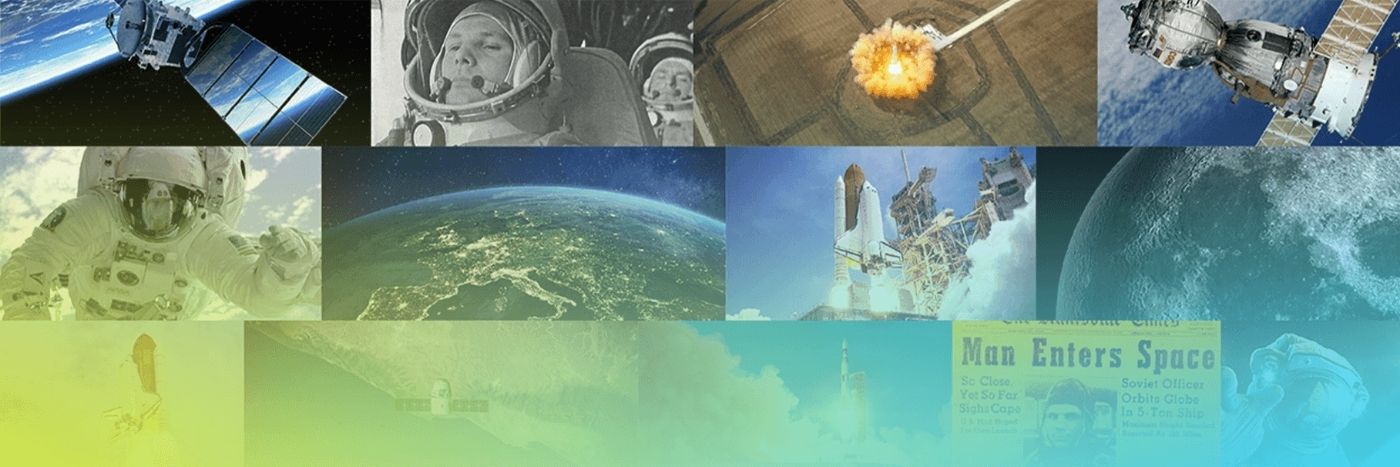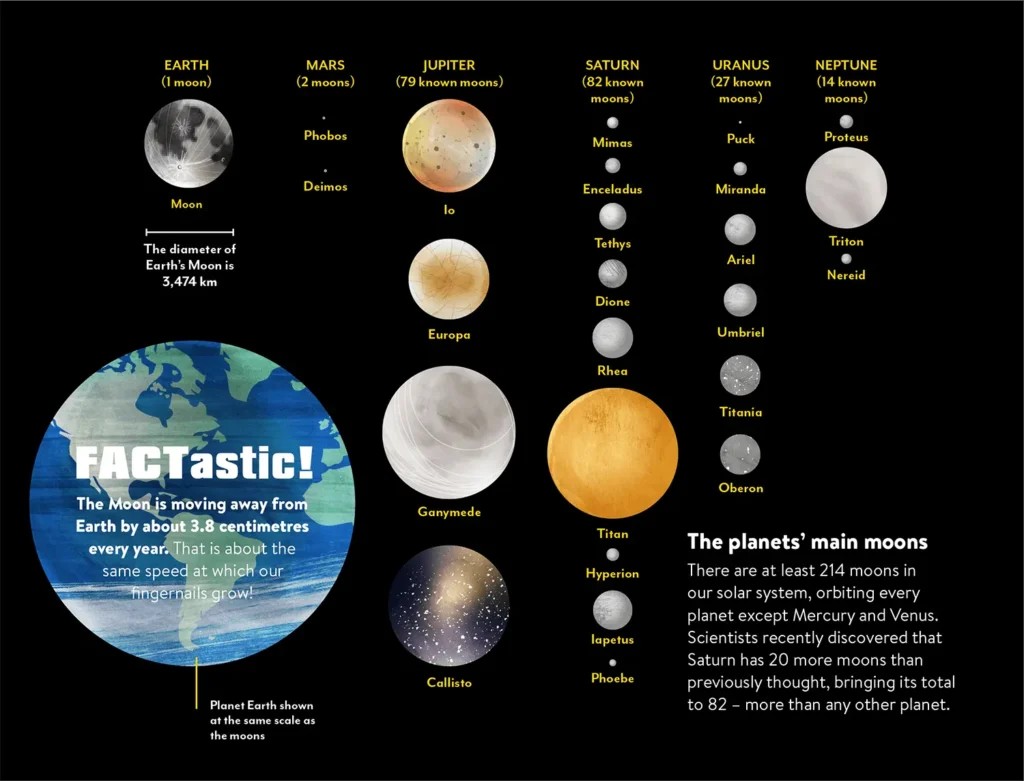
The world’s first astronaut was a 27-year-old Soviet aviator named Yury Gagarin. On April 12, 1961, the 4.75-ton spacecraft Vostok 1 was launched from a location in Baikonur, a wasteland in the south-central region of the Soviet Union (now Kazakhstan). The spacecraft orbited the Earth once in 1 hour and 29 minutes at a maximum speed of 17,000 miles (27,000 kilometers) per hour. It followed an elliptical orbit that carried Gagarin as far as 187 miles (301 kilometers) from Earth. Vostok 1 landed at 10:55 am and made the young cosmonaut a worldwide celebrity. Today, we celebrate International Day of Human Space Flight to honor his incredible achievement.
5 FACTastic Space Stats That Will Blow Your Mind
Engage your classroom on International Day of Human Space Flight with these mind-blowing space facts, perfect for sparking discussion and inspiring curiosity in your students.
1. The sun is so big that you could fit 1.3 million Earths inside it.
The sun is the largest object in our solar system, with a diameter of approximately 1.39 million kilometers. Despite its size, the sun is just an average-sized star in the universe.
2. There are at least 214 moons in our solar system.
Every planet, except Mercury and Venus, has at least one moon. Scientists recently discovered that Saturn has 20 more moons than previously thought, bringing its total to 82! Earth’s Moon is moving away by about 3.8 centimeters every year—that is about the same speed at which our fingernails grow!

Image sourced from Britannica All New Kids’ Encylopedia
3. If a planet has liquid water, it might have the conditions necessary to support life.
More than 20 known planets are both roughly Earth-sized and orbit within the habitable zones of their stars. Among them is Proxima Centauri b, which is the closest extrasolar planet to Earth, some 4.2 light-years away.
4. Space is not completely empty.
Though space is often thought of as empty, it actually contains a small amount of gas and dust particles. These particles, known as interstellar mediums, are scattered throughout the universe and play an important role in the formation of new stars and planets.
5. There are more stars in the universe than grains of sand on Earth.
Finally, one of the most mind-blowing facts about space is that there are as many observable stars (enormous balls of incandescent gas, powered by nuclear fusion reactions in their cores) in the universe as grains of sand on Earth. While estimates vary, astronomists believe that there are around 10^22 stars in the observable universe. That’s 1 followed by 22 zeros!
Discovering the incredible mysteries and wonders of space helps us honor the legacy of Yuri Gargarin while we celebrate International Day of Human Space Flight. From the silent vacuum of space to the vastness of the universe, there is still so much to discover and explore. Let’s continue to push the boundaries of human knowledge and continue our journey into the final frontier.
Information sourced from Britannica School. Not a subscriber? Contact us to learn more.

About the Author
Christopher Heintz
Customer Experience Director
Chris began his career in education as a high school social studies teacher in Chicago. Since then, he’s served in various roles in education management helping teachers navigate the complex world of assessments, data, curriculum, and instruction. Throughout it all, he’s been dedicated to one thing—providing teachers with the tools they need to create positive outcomes for the students in their care!












